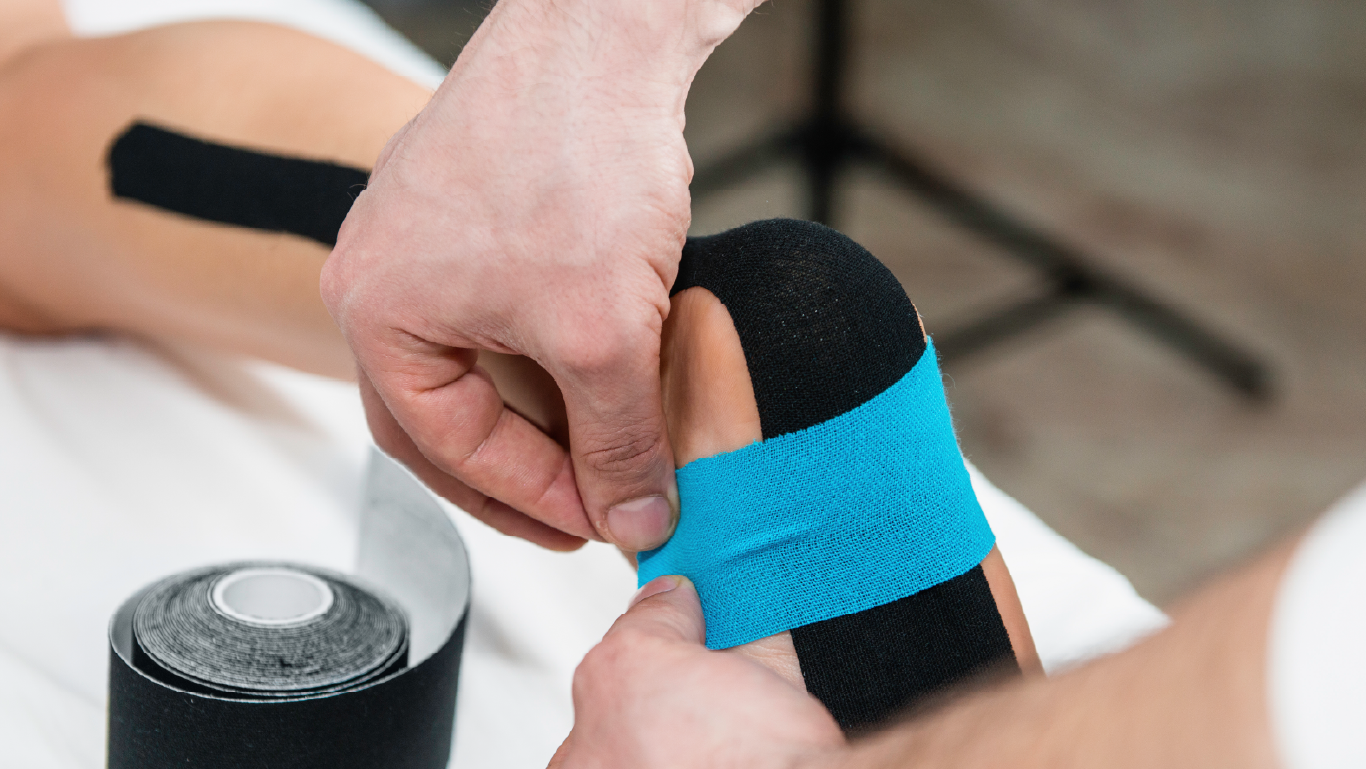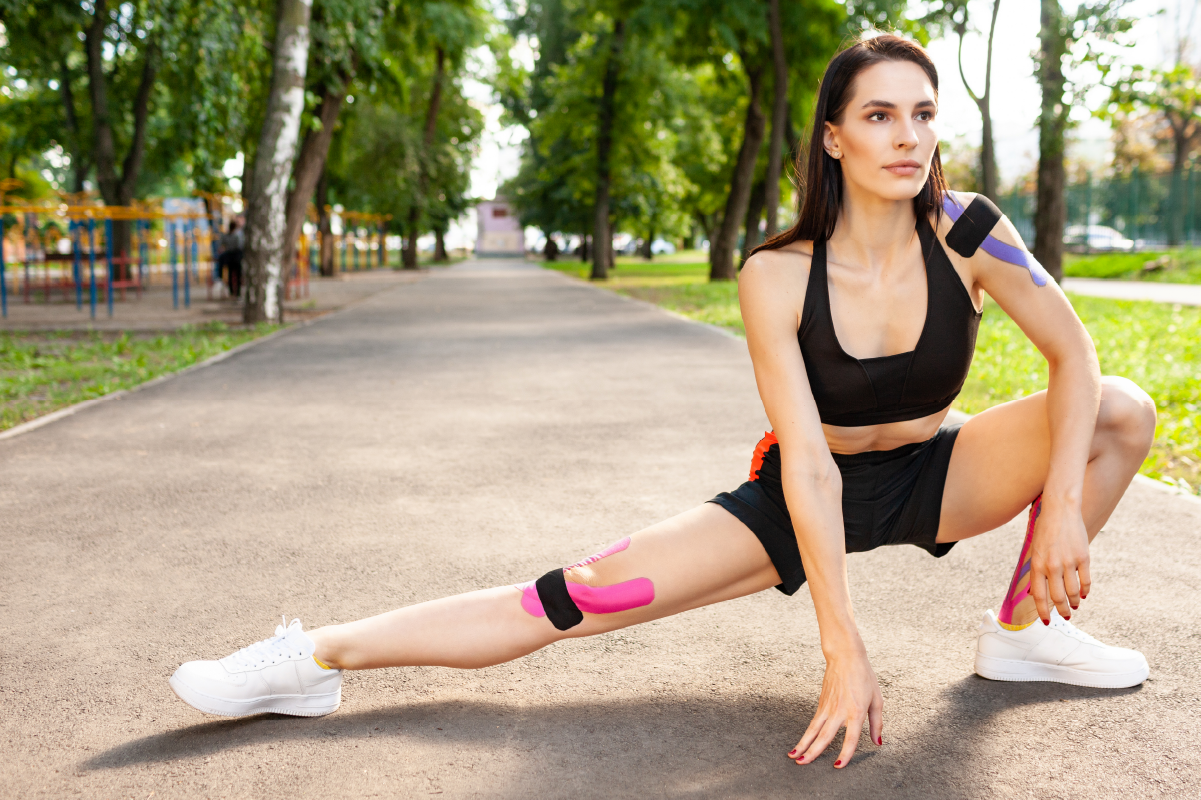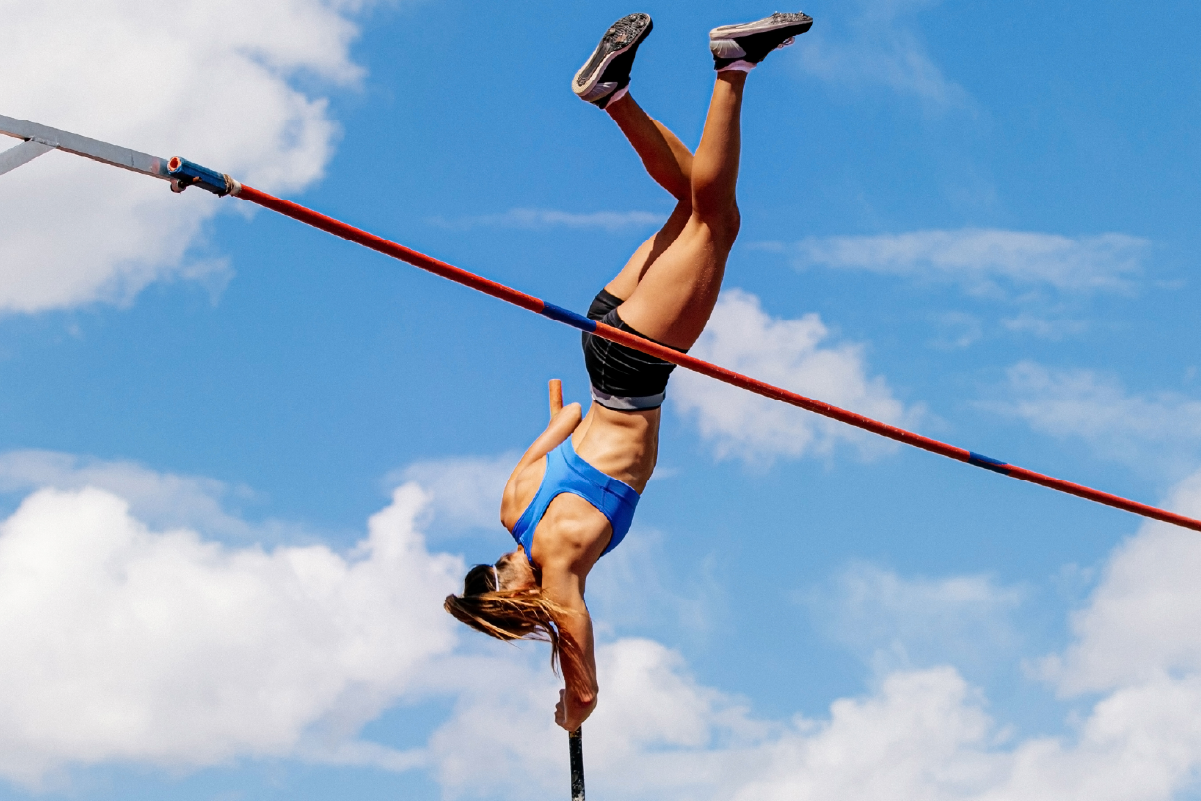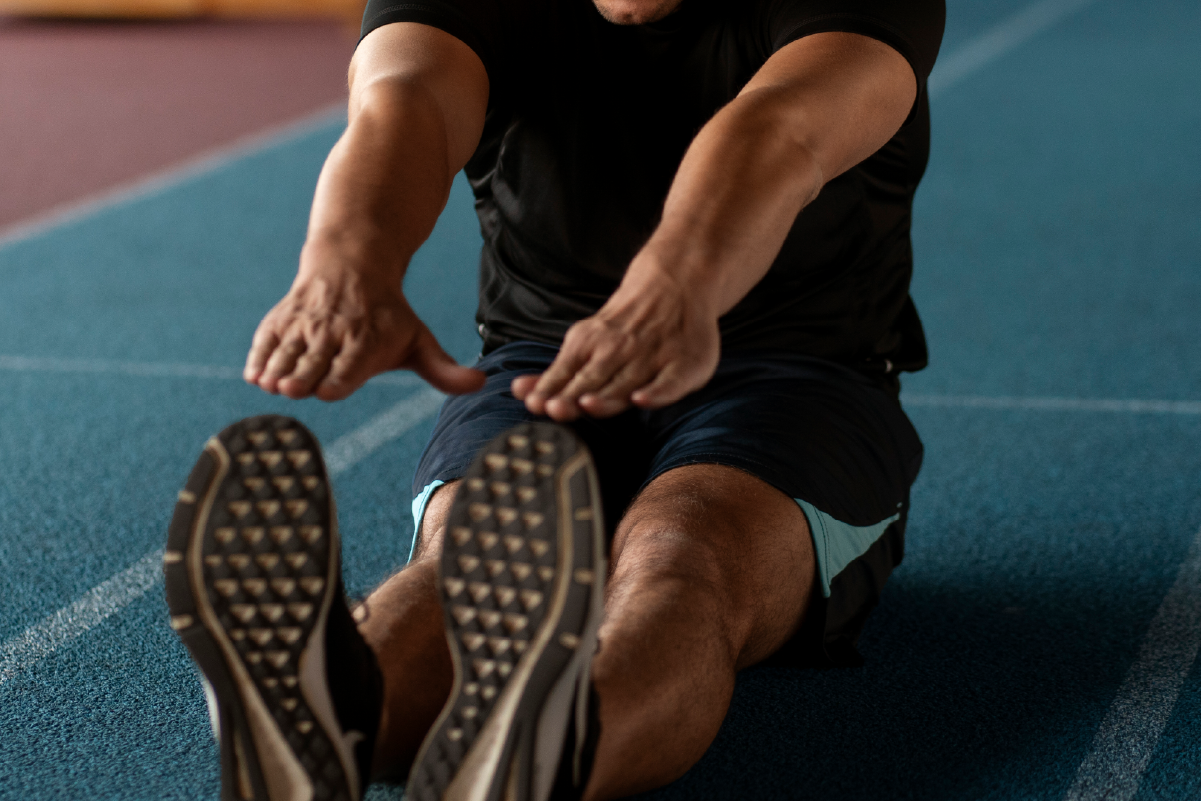+91 85910 13399

Taping is commonly used as an adjunct or temporary technique. Athletes commonly use taping to protect an area that is already injured. It helps by limiting the movement of injured joints, applying pressure to reduce swelling, and supporting muscles or joints.
Taping also helps prevent further injury while healing is in progress. It can be used during rehabilitation or as a preventive measure to avoid injuries in the first place. Additionally, it acts as a first-aid tool to protect and support the body right after an injury. Overall, taping provides stability and protection, making it easier for injured areas to heal and allowing individuals to stay active with more safety.
Manual therapy offers numerous benefits, including pain relief, improved joint mobility, reduced muscle tension, enhanced circulation, better posture, and increased range of motion. It also helps restore functional movement, supports faster recovery, and complements overall physiotherapy and rehabilitation outcomes.

Taping helps prevent injuries by providing support to vulnerable areas like ankles or knees. It limits risky movements, reducing the chances of sprains or strains during sports. It also offers added protection and confidence for those recovering from previous injuries while staying active.

Taping improves joint stability by supporting and aligning the joint properly, especially in cases like ankle sprains or unstable knees. It helps control movement, reduces the risk of further injury, and allows safer participation in activities during recovery or when extra support is needed

Taping gives athletes a sense of support and protection, especially after an injury. This added security can boost their confidence during training or competition, helping them move more freely, focus better on performance, and reduce fear of re-injury while staying active and competitive.

Taping helps relieve pain by gently supporting injured muscles or joints, reducing pressure on sensitive areas. It can also decrease swelling and improve alignment, which eases strain on tissues. This support allows better movement with less discomfort during recovery or daily activities.
Dry Needling is often used as part of a complete treatment plan. It helps improve movement when muscles feel tight or when scar tissue limits flexibility. By targeting trigger points, it can loosen stiff muscles and reduce pain. This therapy is especially helpful for people who have limited range of motion due to injury, overuse, or muscle tension. Dry Needling can also support recovery from sports injuries, joint problems, or post-surgery stiffness. It works well alongside other physiotherapy techniques to speed up healing and restore normal movement in the body.
Have you ever wondered what life would be like without pain holding you back? The sharp, crippling pain that comes when you try to enjoy something exciting? Life can feel a little dull when all you do is sit, dwell on the pain, and try exercises you see online, which only provide temporary relief. If you’re here, you’re already on the path to healing. Click the link below to take the next step and start your journey to lasting relief today!
Copyright 2025. All Rights Reserved. Powered by Inventif Web LLP